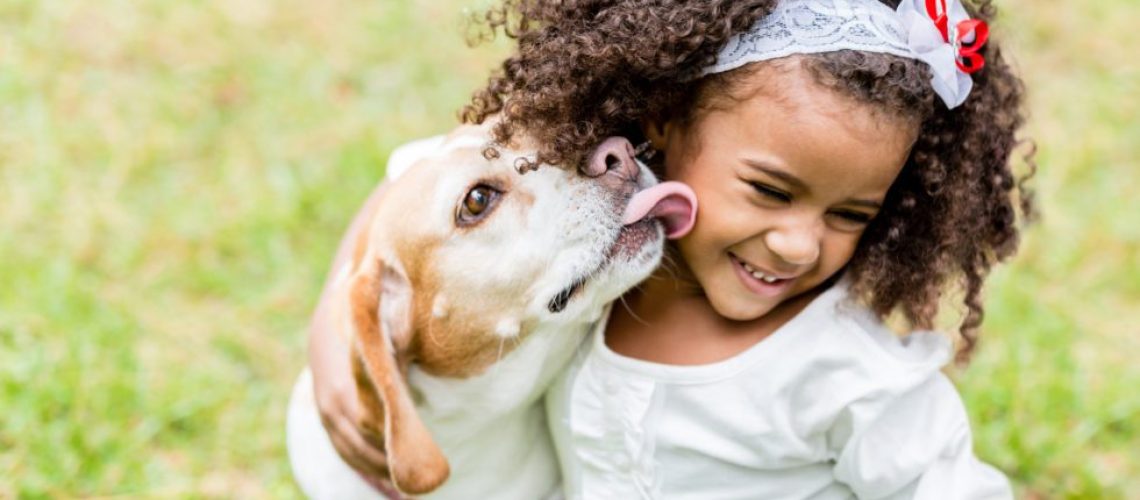Discover the incredible impact of pets on a child's life! From companionship to responsibility, pets offer love, support, and valuable life lessons. Improve emotional well-being with a furry friend.
Key Takeaways:
1. Pets can have a positive impact on a child's emotional development, teaching them empathy, responsibility, and providing companionship.
2. It is important to choose the right pet for your child based on their age, temperament, and lifestyle to ensure a successful bond.
3. Supervision and guidance are crucial when introducing pets to children to prevent any potential harm or stress for both parties involved.
4. Regular interaction and playtime between pets and children can strengthen their bond and create lasting memories.
5. The relationship between pets and children should be nurtured through proper care, training, and communication to maintain a healthy and positive connection.
The Importance of Pets in a Child's Life
Introduction
Pets play a vital role in a child's life, providing companionship, love, and valuable life lessons. Whether it's a dog, cat, fish, or even a hamster, having a pet can bring immense joy and happiness to a child. Pets offer unconditional love and are always there to listen without judgment. They can be a source of comfort during tough times and help children develop important skills such as responsibility and empathy.
Benefits of Having a Pet
Having a pet has numerous benefits for children's emotional well-being. Firstly, pets provide companionship and can become the child's best friend. They offer comfort, reduce stress levels, and can even help alleviate symptoms of anxiety or depression. Pets also teach children about responsibility as they need to be fed, groomed, and taken care of. This helps children develop organizational skills and learn the importance of taking care of another living being.
Pets also promote physical activity as they require exercise. Walking or playing with dogs or engaging in interactive play with cats helps children stay active and healthy. Additionally, having a pet can improve social skills by providing opportunities for interaction with other pet owners during walks or visits to the veterinarian.
List of Benefits:
- Companionship
- Emotional support
- Stress reduction
- Development of responsibility
- Promotion of physical activity
- Improvement in social skills
Overall, pets have an incredible impact on a child's emotional well-being by providing love, companionship, teaching valuable life lessons like responsibility and empathy while promoting physical activity and social interactions.

How Having a Pet Benefits a Child's Emotional Well-being
Introduction
Having a pet can have numerous positive effects on a child's emotional well-being. Pets provide companionship, unconditional love, and a sense of security for children. They can also help children develop empathy, responsibility, and self-esteem.
Companionship and Unconditional Love
Pets offer constant companionship to children, which can be especially beneficial for those who may feel lonely or isolated. Whether it's playing together or simply cuddling up on the couch, pets provide a source of comfort and emotional support. Additionally, pets offer unconditional love to children, regardless of their flaws or mistakes. This unwavering affection helps boost a child's self-esteem and overall emotional well-being.
Developing Empathy and Responsibility
Caring for a pet requires empathy and responsibility from children. Feeding, grooming, and exercising pets teach children the importance of meeting another being's needs. This fosters empathy as they learn to understand and respond to their pet's emotions and desires. Taking care of a pet also instills a sense of responsibility in children as they learn that their actions directly impact the well-being of another living creature.
Sense of Security
Pets can provide children with a sense of security and comfort. The presence of an animal companion can alleviate anxiety or fear in stressful situations. Children often confide in their pets, sharing their secrets or worries without fear of judgment. This bond creates a safe space where children feel understood and supported.
In conclusion, having a pet can greatly benefit a child's emotional well-being by providing companionship, unconditional love, opportunities for developing empathy and responsibility, as well as creating a sense of security.
Note: It is important to consider factors such as allergies or family circumstances before introducing pets to children.
Ways to Introduce a New Pet to Children for a Positive Bond
1. Gradual Introduction
When introducing a new pet to children, it is important to do so gradually. Start by allowing the child to observe the pet from a distance, and then slowly introduce them through supervised interactions. This gradual approach helps the child feel more comfortable and allows them to build trust with the new pet.
2. Encourage Interaction
To foster a positive bond between children and their new pet, it is essential to encourage regular interaction. This can be done through activities such as playing together, grooming the pet, or even training sessions. By actively engaging with their new furry friend, children develop a sense of responsibility and connection.
3. Involve Children in Pet Care
Involving children in the care of their new pet not only teaches them responsibility but also strengthens their bond. Assign age-appropriate tasks such as feeding, cleaning the litter box, or walking the dog. This not only helps children understand the needs of their pet but also instills a sense of empathy and compassion towards animals.
Teaching Children Responsibility in Caring for Pets: Why it Matters
Teaching children responsibility in caring for pets is crucial for several reasons:
a) Life Skills Development:
- Caring for a pet teaches children important life skills such as time management, organization, and problem-solving.
- They learn about commitment and consistency in fulfilling their responsibilities towards another living being.
- This sense of responsibility can translate into other areas of their lives, including schoolwork and relationships.
b) Empathy and Compassion:
- When children are actively involved in the care of their pets, they develop empathy and compassion towards animals.
- They learn to recognize and respond to the needs and emotions of their pets, fostering a sense of kindness and understanding.
- This empathy can extend beyond animals and positively impact their relationships with other people as well.
c) Building Trust:
- By taking responsibility for their pet's well-being, children build trust with their furry companions.
- Pets rely on their owners for food, shelter, and love. When children consistently meet these needs, a strong bond is formed based on trust and reliability.
- This trust-building experience can enhance a child's self-esteem and confidence in their ability to care for others.
Developing Empathy and Compassion through the Relationship with Pets
The Role of Pets in Teaching Empathy
Pets play a crucial role in teaching children empathy. When children have pets, they learn to understand and respond to their needs, which helps them develop empathy. For example, if a pet is hungry or needs attention, children learn to recognize these cues and provide the necessary care. This process helps children understand that others have feelings and needs just like they do, fostering empathy towards both animals and humans.
Building Compassion through Pet Care Responsibilities
Taking care of a pet requires responsibility and compassion. Children who have pets often take on tasks such as feeding, grooming, and walking their furry friends. These responsibilities teach them about the importance of meeting another being's needs and caring for them consistently. By actively participating in their pet's care, children develop compassion as they witness the positive impact their actions have on their pets' well-being.
Benefits of Developing Empathy and Compassion
The development of empathy and compassion through the relationship with pets has numerous benefits for children. Firstly, it helps them form healthier relationships with others by understanding and responding to their emotions effectively. Additionally, having empathy and compassion can contribute to better mental health outcomes for children as they grow older. Research has shown that individuals who possess these qualities are more likely to experience higher levels of happiness and life satisfaction.
Overcoming Challenges When Bringing a Pet into a Household with Children
Preparing Children for Pet Ownership
Before bringing a pet into a household with children, it is essential to prepare them for this new responsibility. Parents can start by educating their children about different types of pets, their needs, and how to interact safely with animals. This preparation can involve reading books, visiting pet shelters, or even fostering pets temporarily to assess the children's readiness for long-term ownership.
Establishing Clear Boundaries and Expectations
Setting clear boundaries and expectations is crucial when introducing a pet into a household with children. Children should understand their roles and responsibilities in caring for the pet, including feeding schedules, exercise routines, and appropriate behavior around the animal. By establishing these boundaries early on, potential conflicts or misunderstandings can be minimized.
Supervising Interactions between Children and Pets
It is important to supervise interactions between children and pets to ensure everyone's safety. Young children may not fully understand how to handle animals gently or interpret their body language correctly. By closely monitoring these interactions, parents can intervene if necessary and teach children how to interact respectfully with their furry companions.
Pets as Social Skills Boosters for Children: How They Help
Facilitating Communication and Emotional Expression
Pets can act as social skills boosters by facilitating communication and emotional expression in children. For some children who may struggle with verbal communication, interacting with pets provides a non-judgmental outlet for expressing themselves. They can talk to their pets, share their feelings, and practice empathy without fear of judgment or rejection.
Encouraging Responsibility and Cooperation
Owning a pet requires responsibility and cooperation from all family members. Children who have pets learn about teamwork as they work together with their family members to care for the animal's needs. This shared responsibility fosters cooperation skills while also teaching them about accountability.
Promoting Social Interaction with Others
Pets often serve as conversation starters among children, leading to increased social interaction with others. Whether it's discussing their pet's antics or sharing stories about their furry friends, pets provide common ground for children to connect with their peers. This shared interest can help shy or introverted children feel more comfortable engaging in social interactions.
Simple Activities to Strengthen the Bond Between Children and Their Pets
Daily Playtime and Exercise
Engaging in daily playtime and exercise activities with pets is an excellent way to strengthen the bond between children and their furry companions. Whether it's playing fetch, going for walks, or teaching tricks, these activities promote physical activity while also fostering a sense of fun and companionship.
Grooming and Pampering Sessions
Taking care of a pet's grooming needs together can be a bonding experience for children and their pets. Brushing their fur, giving baths, or even just cuddling during relaxation sessions can create a sense of trust and closeness between them.
Training Sessions
Involving children in training sessions with their pets not only helps improve obedience but also strengthens the bond between them. Children can participate in teaching basic commands or tricks using positive reinforcement techniques. This shared learning experience enhances communication and cooperation between children and their pets.
The Impact of the Relationship Between Pets and Children on Development and Happiness
Promoting Emotional Well-being
The relationship between pets and children has a significant impact on emotional well-being. Interacting with animals has been shown to reduce stress levels, increase feelings of happiness, and improve overall mental health. Pets provide unconditional love, comfort during difficult times, and serve as non-judgmental companions that can boost self-esteem.
Fostering Responsibility and Self-Discipline
Having a pet instills responsibility and self-discipline in children. Caring for a living being requires consistent effort and commitment, teaching children the importance of following through with their responsibilities. This sense of accountability can extend beyond pet care and positively impact other areas of their lives.
Enhancing Social Skills and Empathy
The relationship between pets and children also enhances social skills and empathy. Pets provide opportunities for children to practice communication, cooperation, and empathy. They learn to understand non-verbal cues, respect boundaries, and develop emotional intelligence through their interactions with animals. These skills can translate into improved relationships with peers and adults alike.
Overall, the relationship between pets and children is a powerful one that promotes emotional development, teaches responsibility, boosts social skills, and contributes to overall happiness in both the child and the pet.
| Conclusion | |
| By fostering a positive bond between pets and children, we can create a nurturing environment where both parties benefit. Pets teach children important life lessons such as responsibility, empathy, and compassion. They provide companionship and emotional support, promoting the development of social skills and self-esteem in children. However, it is crucial to ensure proper supervision, education, and training when introducing pets to children to guarantee their safety and well-being. With love, patience, and understanding, the relationship between pets and children can be a beautiful journey filled with joy and lifelong memories. | |
How can you build positive relationships between children and animals?
Encouraging your child to interact more with your pet will help their relationship develop further. You can supervise and involve your child in tasks such as feeding, watering, grooming, and walking your pet.
What is the bond between a child and a pet?
Research suggests that children often have better relationships with their pets than their siblings. This adds to the growing body of evidence that pets in the household can greatly impact a child's development, potentially improving their social skills and emotional well-being.
Are pets linked to positive child development?
Pets play a crucial role in a child's learning and development, as they help foster empathy and emotional growth, as well as enhance academic performance. Having a pet allows children to have positive experiences and a sense of well-being.
What are the benefits of raising children with pets?
Kids who grow up with pets experience numerous advantages. Developing a positive attitude towards animals can enhance a child's self-esteem and self-assurance. Having a positive bond with pets can also assist in fostering trusting relationships with others.
How do you build a good relationship with animals?
Remain calm and maintain your composure. By establishing trust, respect, and positive communication, you can create a loving relationship with your pet. It is crucial to physically show affection by touching and cuddling them, as well as engaging in verbal interactions such as talking, singing, or reading to them. Love and enjoy your pet to the fullest!
What is the deep bond between kids and dogs?
A recent research conducted by Rachna Reddy at Duke University, Henry Wellman at the University of Michigan, and their colleagues, reveals that the bond between humans and dogs is profound. Even young children naturally treat dogs as if they were humans, understanding their needs and assisting them in fulfilling them.

















